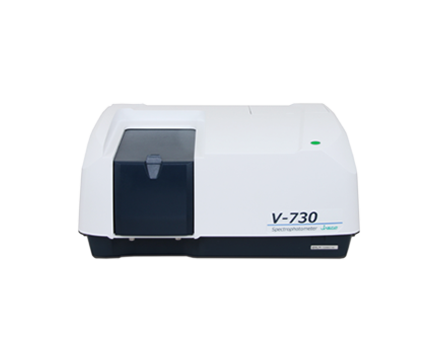Small Volume DNA Thermal Melting using a One Drop Accessory with Capillary Cell
January 5, 2024
Introduction
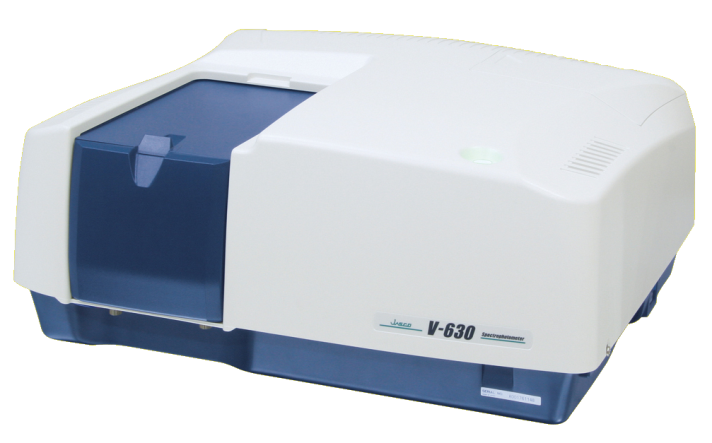
Thermal melting studies are commonly carried out in biochemical and biotechnology fields in order to obtain information regarding a biological sample’s thermodynamic properties. These properties can further elucidate the sample’s thermal stability and possible changes in structure and/or binding.
For many biological samples, it is much more convenient, cost effective, and efficient to use micro-volumes for structural and quantitative studies. Small volume DNA thermal melting analysis was made using the One Drop capillary jacket with a disposable quartz capillary cell, optical pathlength 0.5 mm and sample volume 3 µL.
This application note demonstrates the use of the one drop capillary jacket accessory for biological sample absorption measurements.
Experimental
| Measurement Conditions | |||
| Measurement Wavelength | 260 nm | Data Acquisition Interval | 0.1°C |
| Temperature Gradient | 1°C/min | Response | Fast |
| Start Setting | 3 seconds +/-0.10°C | ||
The measurement procedure is illustrated in Figure 1. The sample is drawn into the cell via capillary action and both edges of the capillary cell are sealed which helps to prevent volatilization of the sample. The capillary cell is then inserted into the capillary jacket and placed into a Peltier thermostatted cell holder. The jacket has a temperature sensor insertion port to ensure accurate measurements of the actual sample temperature.
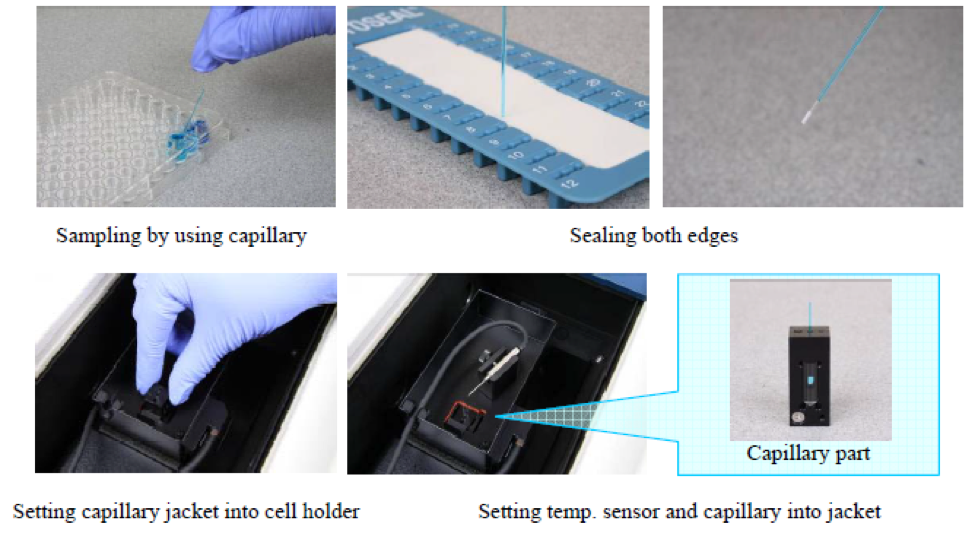
Keywords
210-UV-0013, V-630, UV-Visible/NIR, Microsampling, ETCS-761 Water-cooled Peltier thermostatted cell holder with stirrer, One Drop, Capillary jacket, Biochemistry, DNA thermal melting, Temperature ramping
Results
Figure 2 shows the result of measurement of Poly (dA-dT)-Poly(dA-dT). The absorption measurements were obtained in both the 10 mm rectangular cell (green) and the microsampling capillary cell (blue). The calculated melting temperature of Poly (dA-dT)-Poly(dA-dT) was 63.8ºC and 63.9ºC for the rectangular and capillary cells, respectively.
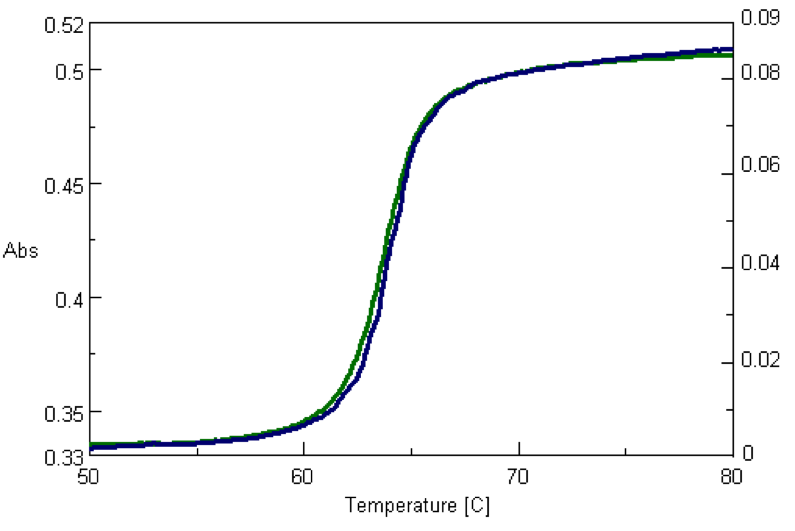
Conclusion
The results illustrate that the One Drop capillary cell and jacket are as reliable as the 10 mm rectangular cell for obtaining absorption measurements on extremely small volumes.
Featured Products:
-
V-730 UV-Visible Spectrophotometer
-
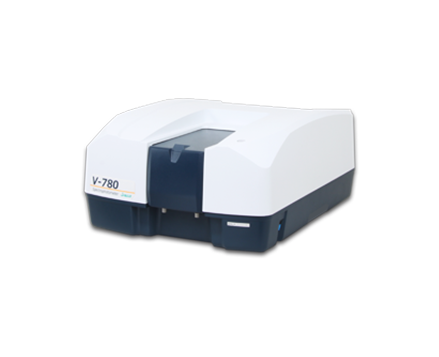
A high sensitivity UV-Visible/NIR Spectrophotometer with InGaAs detector for wavelengths up to1600nm
V-780 UV-Visible/NIR Spectrophotometer

Small Volume DNA Thermal Melting using a One Drop Accessory with Capillary Cell
Introduction

Thermal melting studies are commonly carried out in biochemical and biotechnology fields in order to obtain information regarding a biological sample’s thermodynamic properties. These properties can further elucidate the sample’s thermal stability and possible changes in structure and/or binding.
For many biological samples, it is much more convenient, cost effective, and efficient to use micro-volumes for structural and quantitative studies. Small volume DNA thermal melting analysis was made using the One Drop capillary jacket with a disposable quartz capillary cell, optical pathlength 0.5 mm and sample volume 3 µL.
This application note demonstrates the use of the one drop capillary jacket accessory for biological sample absorption measurements.
Experimental
| Measurement Conditions | |||
| Measurement Wavelength | 260 nm | Data Acquisition Interval | 0.1°C |
| Temperature Gradient | 1°C/min | Response | Fast |
| Start Setting | 3 seconds +/-0.10°C | ||
The measurement procedure is illustrated in Figure 1. The sample is drawn into the cell via capillary action and both edges of the capillary cell are sealed which helps to prevent volatilization of the sample. The capillary cell is then inserted into the capillary jacket and placed into a Peltier thermostatted cell holder. The jacket has a temperature sensor insertion port to ensure accurate measurements of the actual sample temperature.

Results
Figure 2 shows the result of measurement of Poly (dA-dT)-Poly(dA-dT). The absorption measurements were obtained in both the 10 mm rectangular cell (green) and the microsampling capillary cell (blue). The calculated melting temperature of Poly (dA-dT)-Poly(dA-dT) was 63.8ºC and 63.9ºC for the rectangular and capillary cells, respectively.

Conclusion
The results illustrate that the One Drop capillary cell and jacket are as reliable as the 10 mm rectangular cell for obtaining absorption measurements on extremely small volumes.
Keywords
210-UV-0013, V-630, UV-Visible/NIR, Microsampling, ETCS-761 Water-cooled Peltier thermostatted cell holder with stirrer, One Drop, Capillary jacket, Biochemistry, DNA thermal melting, Temperature ramping

 Download This Application
Download This Application